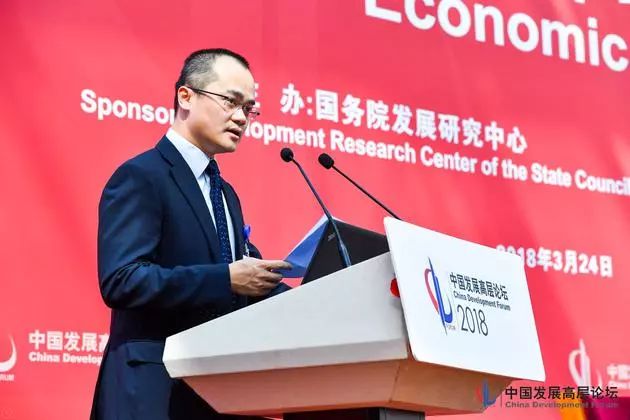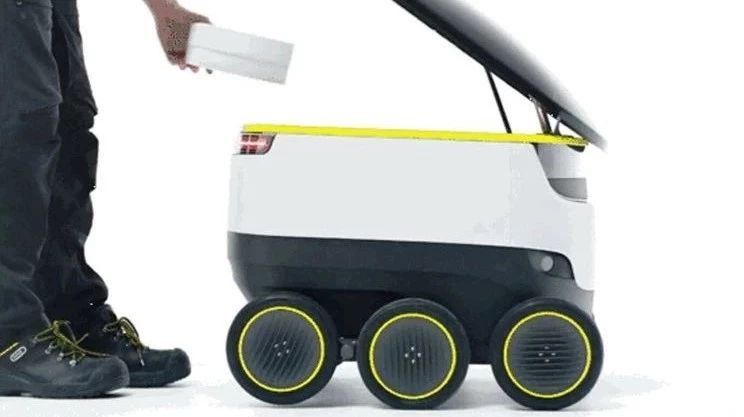Have you watched many videos about the testing of autonomous driving cars that are going to be available for commercial use by at least 2021? Are you feeling a bit tired? Let’s talk with Xia Huaxia, the Chief Scientist and General Manager of the Unmanned Delivery Department at Meituan, about the case of the Meituan Delivery Robot. This year we are conducting tests and next year we will deploy it on a large scale.
Why is it Delivery and Express?
For autonomous driving cars, the more complex the driving scenario and the higher the speed of travel, the greater the demand on the driving capability of the system. Conversely, for scenarios with simpler environments, lower speeds, and fixed route systems, autonomous driving technology can theoretically be deployed more quickly.
As the market that is the best at innovation and application innovation, China has already seen many examples of autonomous driving in vertical market segments. For example, in the past year, there have been trials of automated sweeping robots, automatic trailers at ports, and today we will discuss the unmanned delivery robots demonstrated by Meituan, Ele.me, Cainiao, and JD.com.
On March 28th, Meituan CEO Wang Xing revealed that Meituan Dianping had been conducting trials of unmanned delivery vehicles at Chaoyang Joy City, Beijing and plans to achieve large-scale operation in 2019. This plan is ahead of the commercialization of autonomous driving passenger vehicles by a full two years. So why is it delivery and express?

For autonomous driving startups, producing a few park sweeping robots can be used to verify the feasibility of technology, costs, and business models. However, there are still some obvious shortcomings, such as lacking a unified platform for management, which means that the company needs to spend a lot of effort negotiating deployment in many different parks. If the cost of the robot is not competitive, it is difficult to maintain the enthusiasm and motivation of many parks to use robots.
Most important, the effectiveness of sweeping robots in improving the efficiency of social operations is limited. This means that no matter from a regulatory perspective or from cooperation partners’ perspective, there isn’t a lot of excitement regarding them.
What about delivery and express? According to media reports, since 2014, the volume of express delivery in China has surpassed 10 billion units, and it has been growing at a rate of 10 billion units per year. By 2016, it had already reached 30 billion units. Meituan Waimai is the world’s largest takeaway platform, with more than 500,000 delivery personnel completing over 18 million orders daily. Based on the current growth rate, the Chinese takeaway market will exceed 100 million orders per day in the next few years. For autonomous driving technology, this is a huge blue ocean market.On the other hand, the rising cost of labor has become the Achilles’ heel of such platform-level companies. According to a Deloitte report, China’s labor costs have risen fivefold in the decade since 2005. Insufficient transportation capacity during peak periods such as Double 11 has highlighted the problem, as this directly leads to a decline in user experience.
In addition, the domestic express delivery and food delivery industry has formed a pattern of competition among giants such as Cainiao, JD, SF, Meituan, and Ele.me. Large platforms have a greater enthusiasm for adopting new technologies to reduce overall costs.
From any perspective, unmanned delivery vehicles for food delivery and express delivery are like a perfect business model.
Why Food Delivery > Express Delivery
We cautiously believe that the speed of unmanned delivery vehicles landing in the food delivery industry is greater than that in express delivery.
Ultimately, it comes down to cost. For platform-level companies, the original motivation for unmanned delivery vehicles to replace delivery men and food couriers is to achieve lower overall costs.
Firstly, comparing the cost structure of express delivery and food delivery reveals that the cost of express delivery can be divided into intercity and last mile (i.e. the so-called last kilometer), while food delivery is more often associated with the concept of the last kilometer, and there are rarely any food delivery orders with a distance of more than 30 kilometers. However, for express delivery, the bulk of the cost lies in intercity logistics.
Secondly, even though express delivery in China is getting faster and faster, it still lags far behind food delivery in terms of timeliness. The fact that express delivery station transfers and deliveries are centralized means that a delivery person can deliver 100-200 orders a day. However, the timeliness of food delivery means that a food courier can only handle around 30 orders a day.
Finally, a package for express delivery could be a refrigerator or a document. This uncertainty in the package volume is not very friendly to unmanned delivery vehicles. For food delivery, however, the size of the food container is fixed, meaning that the operating efficiency of each delivery vehicle is stable.
For platform-level companies, the cost of single-item logistics in the last kilometer category is much higher for food delivery than for express delivery. Does Wang Xing have reason to be anxious?
Challenges on the Last Mile
What challenges need to be addressed in the process of landing unmanned delivery vehicles?
Cost is one issue. Taking Meituan’s autonomous delivery vehicle as an example, although it is much simpler than self-driving passenger vehicles, GPS, cameras, low-line count lidar, and millimeter-wave radar are still essential. Combined, the cost is already more than 100,000 yuan.
This problem needs to be viewed dynamically. The cost of the sensor industry chain, especially for lidar, is rapidly decreasing; there will also be significant differences in costs between demo vehicles for testing and mass-produced vehicles. A food courier’s annual salary is approximately 100,000 yuan. If the cost of mass-produced delivery vehicles is below 100,000 yuan and the overall lifecycle is more than one year, the commercialization threshold will be achieved.
Apart from cost, the last mile can actually be divided into two parts: indoor and outdoor. Correspondingly, Meituan has made two types of cars, one for outdoor scenes with 150-200 kilometers of single-charge range, and the other for indoor delivery, which is the car shown below. (In actual operation, the two cars will be connected, for example, the big car will depart from the merchant and be sent to the downstairs, and the indoor delivery car will be sent from the downstairs to the door.)
Official promotional video
For the sake of timeliness, the outdoor car has higher requirements for travel mileage, speed, and capacity. Therefore, the biggest problem with this 1-meter-long mini car with a maximum speed of 40 km/h is the road use problem.
Meituan is currently communicating with the transportation regulatory authorities. Xia Huaxia said that Meituan, as a corporate representative, is participating in the drafting of laws and regulations on low-speed electric vehicles and logistics robots, and making suggestions to the regulatory authorities. The regulations are expected to be introduced during this year. This solves the problem of unmanned delivery cars taking to the road.
The indoor delivery car has more issues, first of all, it needs to tackle problems such as cars taking elevators, entering and exiting hotel revolving doors, and passing through security doors. On the one hand, these issues require better algorithms and more involving simple smart upgrades to infrastructure. This is a common problem in the industry. Liu Qiangdong previously revealed that JD is currently cooperating with elevator manufacturers. After opening the communication protocol, the delivery vehicle can go to the corresponding floor or even ring the doorbell.
Another issue is similar to the depreciation rate of shared bicycles. How to prevent a delivery car with a unit price of tens of thousands of yuan from being taken away by someone? Or cover it with a piece of cloth, which will seriously affect its perception of the surrounding environment?
In addition to the unavoidable user and market education in the early stage, this problem needs to be solved more through technical means. Meituan has equipped each car with a panoramic camera, and the surrounding images can be uploaded to the cloud in real-time. In addition, there are multiple fusion locations of GPS, inertial navigation, and vision, to ensure that the specific location of the delivery vehicle can be accurately located.
Finally, it is mass production. Meituan is ultimately an Internet company and lacks experience in the field of car manufacturing. Car companies have rich experience in production and manufacturing, supply chain management, and line control chassis. Therefore, finding suitable car factories to do OEM work is the next step for Meituan to do.If there were any reservations about self-driving cars in 2019, then receiving food delivery from an unmanned vehicle is something quite easy to accept. It seems that there are no insurmountable obstacles, so let’s see if Meituan will deliver on its promise in 2019.
What happens when electric cars meet artificial intelligence? An unprecedented cross-border movement of ideas and a joint media interview that leads us into the future to welcome the tide of electric, intelligent, networked, and shared travel industry!
The “Future Travel Talk” program invites industry opinion leaders for interviews, explores industry experience and collects strategic insights. The Chinese Association of Electric Vehicles collaborates with cross-border media matrix such as Garage 42, 21st Century Business Herald, China Automotive News, Automotive Business Review, Tencent Auto, NetEase Auto, Sohu Auto, Globetrotter Auto, Automotive News, 36kr, Titanium Media, EO intelligence, New Intelligence Driving, EV Century, Bangning Workshop, Youku Auto, Penguin Number, and more.


- Exclusive Interview | He Tao: The story behind the world’s first commercially operational self-driving sweeper* Wang Chuanfu: BYD will open all control and communication protocols to build a smart electric vehicle platform | GIV 2018

This article is a translation by ChatGPT of a Chinese report from 42HOW. If you have any questions about it, please email bd@42how.com.
